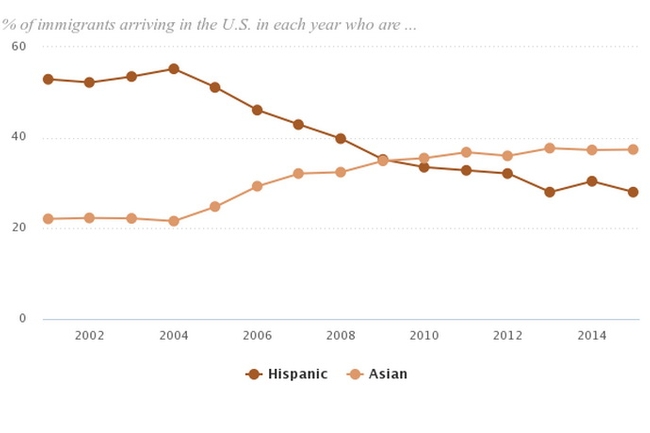Is The U.S. Hispanic Market A Growth Market?

While the market definition has generally expanded during the last 10-15 years to include native-born second- and third-generation Hispanics, the “core” Hispanic market has been characterized by the unacculturated and partially acculturated Latin American immigrants who have represented separate and distinct market opportunities for companies to reach and sell to. The defining characteristic of this market has been the growth and use of Spanish language media and advertising, predominantly consumed by this “core” Spanish-speaking immigrant consumer.
Over the last 30 years, the Hispanic market has exploded, growing from 14.8 million in 1980 to 55 million in 2014, according to Pew Research, but 55% of that growth was driven by immigration in the 1980s and '90s that exceeded U.S. births. However, around 2004, immigration into the U.S. by Hispanics started a steady decline. In 2016, only 28% of the roughly 1 million annual immigrants into the U.S. were Hispanic. Starting in 2010, Asian immigration started to outpace Hispanic immigration.
Looking ahead, the percentage of Hispanic immigration is forecast to decrease steadily to 26% and potentially drop down below 25% by 2020, Pew found. This could trend even farther downward considering the current political environment in the United States.
So, while new Hispanic immigration into the U.S. is still forecast to top 250,000 per year, another trend, reverse immigration, primarily among Mexicans returning from the U.S., is forecast to continue at levels of approximately 200,000 per year. The result is that net Hispanic immigration into the U.S. will be anemic at best, with growth rates of less than 0.4% per year or less than 80,000 per year. This is not a growth market.
While geopolitical and economic factors may change this trend, the next five years look bleak for “core” Hispanic market population growth in sharp contrast to the go-go '80s and '90s when the market grew rapidly.
Overall, the U.S. Hispanic population is forecast to grow, but that growth will come primarily from U.S. births. Which leads to a critical question: Is this U.S.-born Hispanic market a separate and distinct market from the foreign-born immigrant Hispanic market? This question goes to the heart of the future of Hispanic marketing. I would argue that this U.S.-born, acculturated Hispanic is separate and distinct and the strategies and tactics that worked for marketing to immigrant Hispanics the last 30 years will not work for native Hispanics.
The numbers paint a very clear picture: there are two Hispanic markets — one that is stagnant and aging and one that is growing and getting younger. As I've argued numerous times over the years, the old way of Hispanic marketing is becoming irrelevant. A new way forward is required to address this new vibrant market. A new Hispanic market requires a new approach to Hispanic marketing.
Source: Published originally on mediapost.com as Is The U.S. Hispanic Market A Growth Market? by Jose Villa, May 25, 2017.

Immigrants arriving in the US
